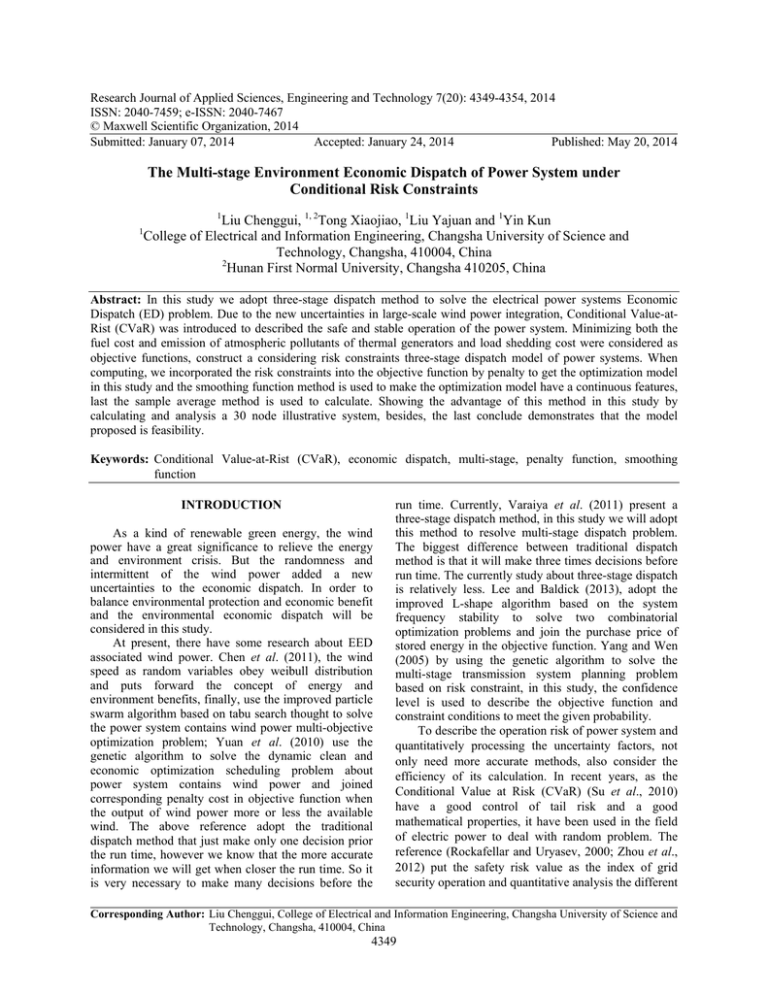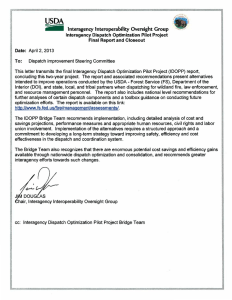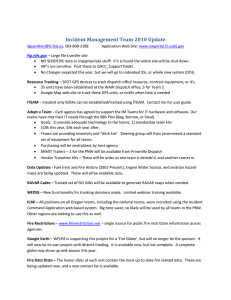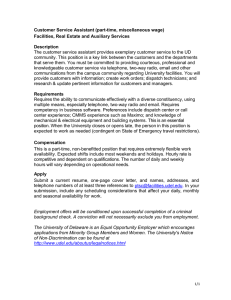Research Journal of Applied Sciences, Engineering and Technology 7(20): 4349-4354,... ISSN: 2040-7459; e-ISSN: 2040-7467
advertisement

Research Journal of Applied Sciences, Engineering and Technology 7(20): 4349-4354, 2014
ISSN: 2040-7459; e-ISSN: 2040-7467
© Maxwell Scientific Organization, 2014
Submitted: January 07, 2014
Accepted: January 24, 2014
Published: May 20, 2014
The Multi-stage Environment Economic Dispatch of Power System under
Conditional Risk Constraints
1
1
Liu Chenggui, 1, 2Tong Xiaojiao, 1Liu Yajuan and 1Yin Kun
College of Electrical and Information Engineering, Changsha University of Science and
Technology, Changsha, 410004, China
2
Hunan First Normal University, Changsha 410205, China
Abstract: In this study we adopt three-stage dispatch method to solve the electrical power systems Economic
Dispatch (ED) problem. Due to the new uncertainties in large-scale wind power integration, Conditional Value-atRist (CVaR) was introduced to described the safe and stable operation of the power system. Minimizing both the
fuel cost and emission of atmospheric pollutants of thermal generators and load shedding cost were considered as
objective functions, construct a considering risk constraints three-stage dispatch model of power systems. When
computing, we incorporated the risk constraints into the objective function by penalty to get the optimization model
in this study and the smoothing function method is used to make the optimization model have a continuous features,
last the sample average method is used to calculate. Showing the advantage of this method in this study by
calculating and analysis a 30 node illustrative system, besides, the last conclude demonstrates that the model
proposed is feasibility.
Keywords: Conditional Value-at-Rist (CVaR), economic dispatch, multi-stage, penalty function, smoothing
function
INTRODUCTION
As a kind of renewable green energy, the wind
power have a great significance to relieve the energy
and environment crisis. But the randomness and
intermittent of the wind power added a new
uncertainties to the economic dispatch. In order to
balance environmental protection and economic benefit
and the environmental economic dispatch will be
considered in this study.
At present, there have some research about EED
associated wind power. Chen et al. (2011), the wind
speed as random variables obey weibull distribution
and puts forward the concept of energy and
environment benefits, finally, use the improved particle
swarm algorithm based on tabu search thought to solve
the power system contains wind power multi-objective
optimization problem; Yuan et al. (2010) use the
genetic algorithm to solve the dynamic clean and
economic optimization scheduling problem about
power system contains wind power and joined
corresponding penalty cost in objective function when
the output of wind power more or less the available
wind. The above reference adopt the traditional
dispatch method that just make only one decision prior
the run time, however we know that the more accurate
information we will get when closer the run time. So it
is very necessary to make many decisions before the
run time. Currently, Varaiya et al. (2011) present a
three-stage dispatch method, in this study we will adopt
this method to resolve multi-stage dispatch problem.
The biggest difference between traditional dispatch
method is that it will make three times decisions before
run time. The currently study about three-stage dispatch
is relatively less. Lee and Baldick (2013), adopt the
improved L-shape algorithm based on the system
frequency stability to solve two combinatorial
optimization problems and join the purchase price of
stored energy in the objective function. Yang and Wen
(2005) by using the genetic algorithm to solve the
multi-stage transmission system planning problem
based on risk constraint, in this study, the confidence
level is used to describe the objective function and
constraint conditions to meet the given probability.
To describe the operation risk of power system and
quantitatively processing the uncertainty factors, not
only need more accurate methods, also consider the
efficiency of its calculation. In recent years, as the
Conditional Value at Risk (CVaR) (Su et al., 2010)
have a good control of tail risk and a good
mathematical properties, it have been used in the field
of electric power to deal with random problem. The
reference (Rockafellar and Uryasev, 2000; Zhou et al.,
2012) put the safety risk value as the index of grid
security operation and quantitative analysis the different
Corresponding Author: Liu Chenggui, College of Electrical and Information Engineering, Changsha University of Science and
Technology, Changsha, 410004, China
4349
Res. J. Apppl. Sci. Eng. Technol.,
T
7(20)): 4349-4354, 2014
2
risk will effected
e
the cost of the systeem and build the
t
optimizatioon goal contain
ns risk constraaint. But they all
adopted thhe traditional dispatch
d
methood and this stuudy
will descriibe the three-sstage grid secuurity conditionnal
risk value base
b
on the con
nditional valuee at risk theory.
Basedd on the literatu
ure (Varaiya et
e al., 2011), thhis
study consstructed three-sstage EED opttimization moddel
of power system
s
under conditional
c
riskk constraints and
a
take the minimum value of cost of coall-fired generatiing
units, polluutant discharg
ge fees and thee cost of cuttiing
load as thhe objective function. In calculating, the
t
conditions risk constrain
nt by penalty function and be
incorporateed into the objective function
f
as an
optimizatioon model, the smooth processing technoloogy
will be useed for the modeel is not availaable for the miccro
and multi--peak characteeristics and will
w be tested by
IEEE30 noode system, thee results verify the feasibilityy of
the proposed method.
we gennerally take thhe load sheddding approach to let
system meet the saffe operation constraints,
c
thee first
node n controllable load will been as decision vaariable
s
in this stage.
p
Three--stage EED optimization model of power
system
m with risk con
nstraint: The goal of this sttudy is
adopt the
t three-stagee method to reasonable
r
disttribute
the ouutput of geneerator and sett the total cost is
minimuum in a scheduling cycle under
u
the loaad and
Securitty constraints was
w been met.
Objecttive function:
Traditiional generaation cost: According too the
literatuure (Qiu et al., 2011) that the cost of convenntional
generattion cost Fc ($//h) can be expressed as:
N
Fc Fck ( pkG ) a1k ( pkG )2 b1k pkG c1k
k 1
TH
HREE-STAGE
E EED MODE
EL WITH
RISK CONSTRAINT
T
Three-stagge dispatch model:
m
Most ED
D problem adoopt
the traditioonal dispatch method
m
to deteermine the outpput
of the Connventional unitt. With the rappid developmeent
of smart gird,
g
advanced
d monitoring and
a measuremeent
technologyy has be used more widely and mature, thhat
means thee times moree closer to the
t
runtime the
t
informationn we got is mo
ore accurate. So
S the three-staage
dispatch method
m
has been presenteed in literatuure
(Varaiya et al., 2011) (Fiig. 1).
The biggest characteeristic of this method is thatt it
will make three times deccision to optim
mize the outputt of
the regulaar unit. As well as traditioonal decision, in
Schedulingg the output of the regular unit will be
dispatchedd, with the advanced monitoring
m
a
and
measuremeent technology
y has be used more
m
widely and
a
mature, thaat means the times more closser to the runtim
me
the information we got iss more accuratee, this need us do
multiple decision
d
to optimize
o
the output of the
t
generator. In Recourse, we
w use the obtaained informatiion
to adjust thhe load to let the
t whole systtem achieved the
t
most maxximum social benefits undeer the operatiing
constraintss, in this study
y, we first nodde m controllabble
load as deccision variablee in this stage. The Emergenncy
stage meaans that a em
mergency acccident has beeen
occurred in
i a few min
nutes before the
t
runtime and
a
security coonstraints have not been meteed, in this stagge
(1)
where,
= The nuumber of generaator unit
N
= The ouutput of first k units,
u
MW
pk
a1k, b1k, c1k = The genneration cost constant
c
Pollutiion cost function: Accordiing to the liteerature
Qiu et al.
a (2011) that the pollution cost
c function Fc ($/h)
can be expressed as:
N
Fe Fek ( pkG ) a2k ( pkG )2 b2k pkG c2k
k 1
(2)
where,
= The nuumber of generaator units
N
= The ouutput of first k units,
u
MW
pk
a2k, b2k, c2k = The connstant of air poollution cost
Objecttive function:
miin F ( pk , dm , dn ) Fc Fe c2 dm c3dn
(3)
o first m, n nodes
where, dm, dn are thhe variation of
controlllable load, resppectively in seecond and thirdd stage
and dm, dn< = 0; c2, c3 are the price of the load varriation
and c2<<c
< 3, $/MW.
m
of three-sstage
Fig. 1: The model
4350 Res. J. Appl. Sci. Eng. Technol., 7(20): 4349-4354, 2014
Security constraints:
Balance constraints:
N
NW
k 1
n 1
2 ( P G , PW , d m , d n ) max
Pij ( P G , PW , d m ) Pij max
Pij max
ls
PkG PnW P D d m d n
3 ( P G , PW , d m , d n ) max
(4)
In the first stage dm = dn = 0 and the second stage
d m 0, d n 0 and the third stage d m 0, d n 0 .
The constraints of conventional unit output:
(5)
where, PGkmax, PGkmin are upper and lower limits
respectively of the first k conventional units.
Transmission line constraints: In DC model, Pij
express the active power in transmission line and
Pij = (δi - δj) /Xij, where Xij is the lines reactance
between first i and j node; δi, δj are the voltage phase
angle of first i and j nodes, respectively. So the DC
power flow can be expressed as:
P B
where,
B = The n-1 dimensional matrix
P = The node power injection vector
δ = Node phase Angle matrix
From the above expression, we obtain the δ = B'-1 P and
according the demand balance we can also obtain
Pi = PGi - PWi - di, where d is the load forecasts. For the
three-stage dispatch method is adopted in this study, so
the load d is a variable and have a different value in
different stage, in the second and third stage, the load d
must subtract the shedding load in this stage.
S is a set of all lines connected with wind power,
For transmission lines, the system will be reaches an
unsafe condition at this line which have a biggest
unsafe degree, so for complex power systems, only seek
this line which have a greatest degree of risk, that can
easily analyze the unsafe restraint of system. So there
have the security index function in different stage
respectively:
1 ( P G , P W , d m , d n ) max
l s
Pij ( P G , P W ) Pij max
Pij max
Pij max
ls
where,
Nw = The numbers of wind turbines
Pnw = The output of first n units, MW
PD = The load demand
PkGmin PkG PkGmax
Pij ( P G , PW , d m , d n ) Pij max
(6)
where,
dm, dn = Decision variables in the second and third
stage respectively
Pijmax = The largest circulated power between nodes i
and j
When φ (PG, PW, dm, dn) <0 means that the system
operation is secure, otherwise is dangers. Because,
when more closer to the runtime the information
obtained is more accurate, we only choice the security
index function in the third stage as the transmission
constraints. In traditional optimization scheduling,
control and state variables are presented as a
determining variable, while the new energy generation
in the system may be a random variation (Jabr and Pal,
2009), So lots of literature using the chance-constrained
programming which mostly based on the intelligent
algorithm or the combination of intelligent algorithms
to this problem, however there will produce a large
amounts of computing. The output of wind power in
Conditional Value at Risk model will be simulated by
Monte Carlo, with discrete points to approximate the
integral function and put original problem into a convex
optimization problem by construct a function and
finally introduce a auxiliary variables zk to simplify the
model. Considering the operational risk due to
uncertainties in the new energy generation and load, we
use CVaR (Yang and Wen, 2005) theory and transform
the security constraints into risk constraint for
quantitative analysis.
In the first stage, the decision variables are
conventional units and the CVaR constraints of the
transmission lines is:
q1 ( PG , PW , z1 ) z1
N
1
( ( P
(1 ) N
1
i 1
1
G
, PW ) z1 ) r1 0
(7)
where,
z1 = The maximum threshold of the transmission
component collection in the first stage
α1 = The probability level as the system is safety
operation in the first stage
-r1 = The risk range in the first stage and it is a
constant
Similarly, we can obtained the CVaR constraints of
the transmission lines in the second and third stage,
respectively:
4351 Res. J. Appl. Sci. Eng. Technol., 7(20): 4349-4354, 2014
q2 ( PG , PW , dm , z2 ) z2
N
1
( (P
(1 ) N
2
q3 (PG , PW , dm , dn , z3 ) z3
2
i 1
N
1
( (P
(1 ) N
3
i 1
G
3
G
Simplify model by smoothing function: We assume
the function:
, PW , dm ) z2 ) r2 0
, PW , dm , dn ) z3 ) r3 0
g ( x ) max{ g i ( x )}
1 i m
(8)
where,
z2, z3 = The maximum threshold of the transmission
component collection in the second and third
stage
α2, α3 = The probability level as the system is safety
operation in the second and third stage
-r2, -r3 = The risk range in the second and third stage
and they are constant
The three-stage EED model with CVaR constaint:
According to above analysis, we can build the threestage EED model with CVaR constraints:
min F min ( PG , dm ,d n ) E[ Fc Fe c2 d m c3 d n ]
N
1
G
W
z1 (1 ) N (1 ( P , P ) z1 ) r1 0
i
1
1
N
1
G
W
z2 (1 ) N ( 2 ( P , P , d m ) z2 ) r2 0
i 1
2
N
1
z
(3 ( P G , PW , d m , d n ) z3 ) r3 0
3 (1 3 ) N
i 1
N
NW
G
P
PnW P D d m d n
k
k 1
n 1
G
G
Pmin
P G Pmax
(9)
THE COMPUTING FOR NEW
DISPATCH MODEL
Simplify model by penalty function: Form the (9) we
can see there have three different security constraints in
this Optimization model, in order to turn this
Optimization model become a unconstrained
optimization problems, we will processing this model
by penalty function:
(11)
where, gi (x) R n R is twice continuously
differentiable.
Obviously, g (x) function is not smooth at some
point, e.g., gi (x) = gj (x), Given a parameter t, we use
the same method to define its smoothing function:
m
g (t , x) t ln exp( gi ( x) / t )
i 1
(12)
For (11) due to its non-differentiable, we can’t
obtain each of its first derivative, According to the
definition of smoothing function, we can processing
this model by smooth technology:
min( PG ,dm ,dn , z1 , z2 , z3 ) E[ Fc Fe c2dm c3dn ]
N
( PG , PW ) z1
1
r1 z1
))
t1 ln(1 exp( 2 t
(1 1 ) N k 1
1
t1 pn1 ln(1 exp[
])
t1
N
( PG , PW , dm ) z2
1
r2 z2
))
t2 ln(1 exp( 2
t2
(1 2 ) N k 1
])
t2 pn2 ln(1 exp[
t2
N
( PG , PW , dm , dn ) z3
1
))
r3 z3
t3 ln(1 exp( 3
t3
(1 3 ) N k 1
t3 pn3 ln(1 exp[
])
t3
s.t.
N G NW W
D
Pk Pn P dm dn
n1
k 1
PG PG PG
max
min
(13)
where,
pn1, pn2, pn3 = The parameter of penalty function
t1, t2, t3
= The parameter of smooth function
SIMULATION AND RESULTS
min ( P G , d m , d n , z1 , z2 , z3 ) E [ Fc Fe c2 d m c3 d n ]
N
1
pn
(
z
r
(1 ( P G , P W ) z1 ))
1
1
1
(1 1 ) N i 1
N
1
G
W
pn2 ( z 2 r2 (1 ) N ( 2 ( P , P , d m ) z 2 ))
i 1
2
N
1
( 3 ( P G , P W , d m , d n ) z3 ))}
pn3 ( z 3 r3
(1
)
N
i 1
3
s.t
N
NW
G
P
PnW P D d m d n
k
k 1
n 1
G
G
Pmin
P G Pmax
(10)
The select of simulation system and data: With 30
nodes system as an example, make a theoretical
analysis to the model and node 1 is the balance bus and
the first 7, 8 node is the controllable load respectively
in the second and third stage, that m = 7, n = 8. The
wind power is inject at the first 20 node and its value
can be predicted by the reference (Hetzer et al., 2008),
the system total active load is 2.084 pu, Power
reference value is 100 MVA. To simplify the
calculation we assume that the parameter pn1 = pn2, =
pn3 = 10^3 and t1 = t2, t3 = 10^-3, the price of the
shedding load in the second and third stage will be
made according to local policy and in this study we
assume the value of c2, c3 is 100 and 1000 $/MW.
4352 Res. J. Appl. Sci. Eng. Technol., 7(20): 4349-4354, 2014
Fig. 2: The relationship of CVaR value and total cost
Fig. 5: The influence of different parameters on total cost
Fig. 3: The relationship of different confidence level and total
cost
The relationship of different confidence level and
total cost: As the all confidence level are 90% and
-r1 = -r2 = -r3 ∈ [-0.241, -0.08], we can get a range of
optimal solutions in the Fig. 3. Form this picture we can
see that with the increase of grid security CVaR value,
i.e., the lower security of the grid, the cost of generation
will be corresponding reducing, at the same time the
security of the system will be more lower. When focus
on the security operation of system, the smaller security
CVaR value operation mode will be selected; when
focusing on economic operation, the bigger security
CVaR value will be selected. Therefore, form the Fig. 3
we can intuitive judgments the relationship between
system security and economy, then provides a good
theoretical basis for the decision makers to find a good
balance of system security operation and economy.
The comparison of different confidence levels:
Firstly, adopt Monte Carlo simulation to predict the
wind power output is 1.0006 pu, then obtain the
different total generation cost according to the
confidence level changes. As can be seen from Fig. 4,
for the same grid security CVaR value, when the
confidence level is higher, the total generation cost will
be added. Indicate that when the requirement of the
system security is higher and the economics of system
will be worse.
Fig. 4: The influence of wind power output on total cost
Results and analysis: For the range of grid security
CVaR value in different stage, we can obtain by linear
weighting method (Sun et al., 2009) and Combined
with the simulated IEEE30 node system and slip
transmission power, we can assume (Fig. 2):
r1 = r2 = r3 [ 0.241, 0.08]
The influence of wind power output on total cost:
Firstly, we assume that all confidence level of different
stage are 90% and -r1 = -r2 = -r3 ∈ [-0.241, -0.08], the
Fig. 5 shows that when the output of wind power is
increasing, the total generation cost of the system will
be reduced under the total load remains unchanged.
The influence of different parameters on total cost:
Firstly, we assume that the output of wind power is the
same in different parameters and the all confidence
level are 90%. From the Fig. 5, when the parameters c2,
c3 is increasing, the total generation cost will be gained.
Because the price of the shedding load is increased,
4353 Res. J. Appl. Sci. Eng. Technol., 7(20): 4349-4354, 2014
then the cost will be gained. For the third stage is more
closer the runtime, so c2, c3, in this study we assumed
the c3 is 10 times of c2. Therefore, we can see the
changes of the value of c3 have more impact to the
curves than the c2.
CONCLUSION
In this study, three-stage dispatch method have
been adopt to solve the three-stage EED problem of
power system, compare to the traditional method, the
biggest difference is that it will make three times
decisions before the runtime and the traditional method
just make only once scheduling. With the wind power
and other new energy incorporated and load uncertainty
has increased the difficulty of the power grid
scheduling, so, it must be accurately and quantitative to
describe the safety operation of the grid. Conditions
risk theory has good mathematical properties in study
on random question, so it been used to quantitative
research safety problem of grid, because adopt the
three-stage dispatch method, requires systems must
meet grid security constraints at each stage. For the
model have non-differentiable and multimodal
characteristics, using a smoothing processing
technology make the Optimization goals has
continuously differentiable characteristics. The main
conclusions are as follows:
For the three-stage dispatch method, adopt the
different forecast value of the wind power to reflect
the information we obtained is different in each
stage and for the random nature of wind power
output and load, the grid safety value in each stage
are different and build the three-stage EED model
under the risk constraint. And analyze the relations
between the security and economic of the gird,
conform to the development concept of the smart
grid.
For the three-stage model with risk constraints,
using a penalty function processing and makes it to
be a inequality constrained optimization model,
while for non-smooth characteristics of the model,
using smoothing function to converted it into a
convex programming problem.
Developing the application of three-stage method
in power scheduling and providing a reference for
the behind research of multi-stage schedule. While
developing the application of conditions risk theory
to deal with the random security issues in power
system. Experiments show that the three-stage
EED model contains wind power have high
practical value.
ACKNOWLEDGMENT
This study was supported by The national natural
science foundation of China (project) (No.11171095).
REFERENCES
Chen, D.J., Q.W. Gong and M.L. Zhang, 2011. Multiobjective optimal dispatch in wind power
integrated
system
incorporating
energyenvironmental efficiency [J]. Proc. CSEE, 31(11):
10-16, (In Chinese).
Hetzer, J., D.C. Yu and K. Bhattarai, 2008. An
economic dispatch model incorporating wind
power [J]. IEEE T. Energy Conver., 23(2):
601-611.
Jabr, R.A. and B.C. Pal, 2009. Intermittent wind
generation in optimal power flow dispatching [J].
IET Gener. Transm. Dis., 3(1): 66-74.
Lee, Y.Y. and R. Baldick, 2013. A frequencyconstrained stochastic economic dispatch model
[J]. IEEE T. Power Syst., 28(3): 2301-2312.
Qiu, W., J. Zhang and N. Liu, 2011. Model and solution
for environmental/economic dispatch considering
large-scale wind power penetration [J]. Proc.
CSEE, 31(19): 8-16, (In Chinese).
Rockafellar, R.T. and S. Uryasev, 2000. Optimization
of conditional value-at-risk [J]. J. Risk, 2(3): 21-41.
Su, P., T. Liu and X. Li, 2010. Determination of
optimal spinning reserve of power grid containing
wind [J]. Power Syst. Technol., 34(12): 158-162,
(In Chinese).
Sun, X., Y. Lü, J. Gao and Q. Xia, 2009. Power grid
economy and security coordination lean method
[J]. Power Syst. Technol., 33(11): 12-17, (In
Chinese).
Varaiya, P., F. Wu and J. Bialek, 2011. Smart operation
of smart grid: Risk-limiting dispatch. Proc. IEEE,
99(1): 40-57.
Yang, N. and F.S. Wen, 2005. Risk-constained
multistage transmission system expansion planning
[J]. Automat. Electr. Power Syst., 29(4): 28-33, (In
Chinese).
Yuan, T., Q. Chao, Y. Toerxun and Y. Li, 2010.
Optimized economic and environment-friendly
dispatching modeling for large-scale wind power
integration [J]. Proc. CSEE, 30(31): 7-13, (In
Chinese).
Zhou, R.J., L.H. Yao, X.J. Tong, S. Peng and S. Li,
2012. Security economic dispatch in wind power
integrated systems using a conditional risk method
[J]. Proc. CSEE, 32(1): 56-63, (In Chinese).
4354



